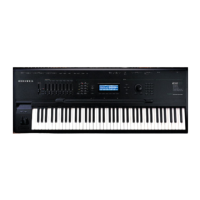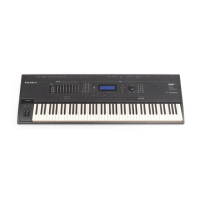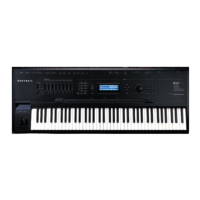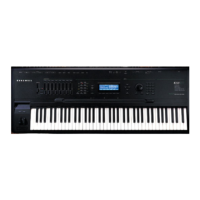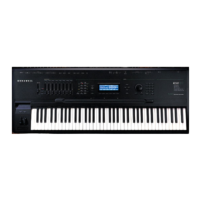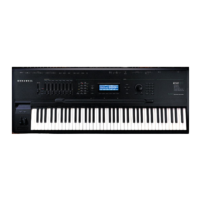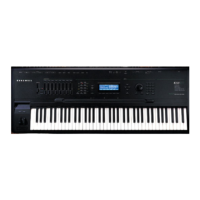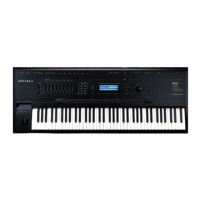DSP Functions
Non-linear Functions
14-45
PAD 0, 6, 12, 18 dB
SOURCE 1 Control Source list
SOURCE 1 DEPTH ± 4.00 x
SOURCE 2 Control Source list
SOURCE 2 DEPTH CONTROL Control Source list
MINIMUM DEPTH, SOURCE 2 ± 4.00 x
MAXIMUM DEPTH, SOURCE 2 ± 4.00 x
The values for each of the parameters on the SHAPER’s control input page are expressed in
arbitrary quantities that represent a multiplication of the amount of shaping applied.
Double Shaper (SHAPE2)
This is simply a series of two SHAPERs. The first is programmed exactly like SHAPER. The
values of the control parameters for the second are fixed at .75 times those of the first. This can
produce effects that the single SHAPER can’t. If, for example, you set the Adjust parameter of
SHAPE2 to 1.000, it will process the input signal with a value of 1.000, then again with a value
of .75. This is not the same as processing the input signal once with an Adjust value of 1.75.
Two-Parameter Shaper (2PARAM SHAPER)
This function is similar to the SHAPERs described above, but it has two control input pages
instead of one. The F1 EVN control parameters enable you to add distortion to sine wave
partials that are even harmonics of the input signal, and the F2 ODD control parameters let you
add distortion to sine wave partials that are odd harmonics of the input signal.
In simpler terms, the control parameters behave like those of the regular SHAPER, but they can
shape the signal about six times more than SHAPER can. 2PARAM SHAPER works by
separately multiplying the input signal by the combined values of the two sets of control
parameters, adding the resulting signals, and multiplying that sum by a constant, then
wrapping the signal values that exceed positive or negative full scale (see the WRAP function
below).
Experimentation is the key here. Start with very low values for each of the Adjust parameters,
and increase them until you begin to hear an effect. Some values will create a DC offset in the
signal—that is, the signal won’t oscillate around the normal zero-point of the scale, but will be
shifted toward positive or negative full scale. This may cause a click or thump in sounds with
rapid attacks, decays, or releases. To reduce the click or thump, you can edit the AMPENV to
produce a more gradual envelope.
2PARAM SHAPER works best with the single-cycle waveform keymaps (IDs 112—166).
+ full
scale
- full
scale
+ full
scale
- full
scale
SAWTOOTH WAVE SAME WAVEFORM WITH
NEGATIVE DC OFFSET

